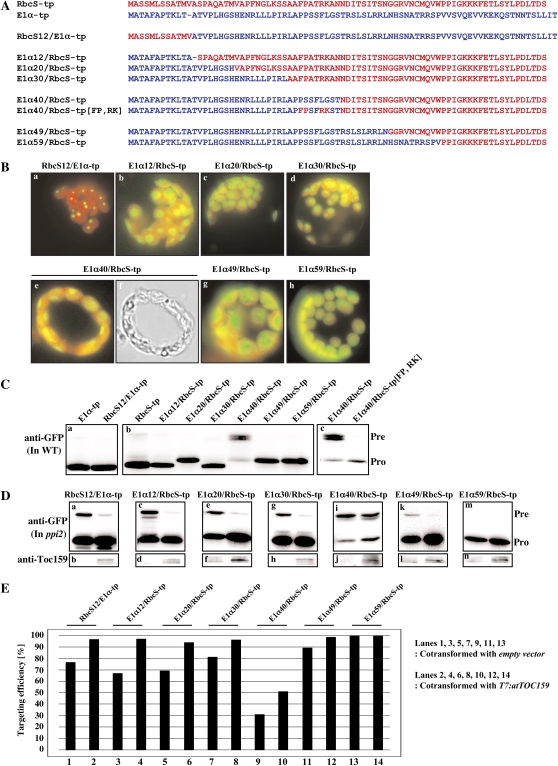Figure 4.
Toc159 dependence of RbcS-tp is mediated independently by multiple regions. A, Amino acid sequences of hybrid TPs of E1α-tp and RbcS-tp. The N-terminal 12-amino acid residues of RbcS-tp and E1α-tp were swapped to produce RbcS12/E1α-tp and E1α12/RbcS-tp. In addition, the 20-, 30-, 40-, 49-, or 59-amino acid N-terminal fragment of RbcS-tp was replaced by the corresponding N-terminal E1α-tp fragment. B, Import experiments with hybrid TPs. Protoplasts were transformed with the indicated constructs and the import of these reporter proteins was examined directly by observing GFP signals with a fluorescent microscope. In the case of E1α40/RbcS-tp, transformed protoplasts were immunostained with anti-GFP antibody followed by fluorescein isothiocyanate-labeled secondary antibody because it gave no GFP signal. C and D, Western-blot analysis of import experiments. Protoplasts from wild-type (WT; C) or ppi2 mutant (D) plants were transformed with the plasmids encoding swapping mutants alone or together with T7:atTOC159, and total protein extracts were analyzed by western blotting using anti-GFP and anti-Toc159 antibodies. Pre, Precursor forms; Pro, processed forms. E, Quantification of targeting efficiency. The import efficiency is expressed as the percentage of the amount of the processed form divided by the total amount of expressed protein.

